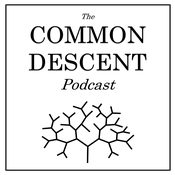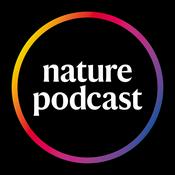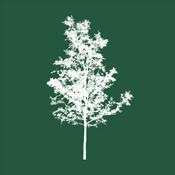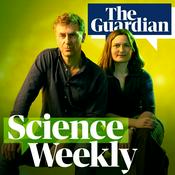Pollinators & Pods: The AI Guide to Milkweed and Insect Life
Grow Milkweed Plants Network
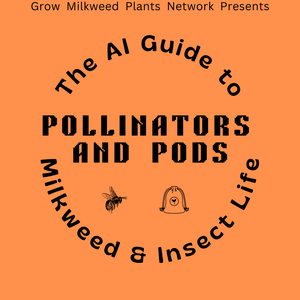
Último episodio
Episodios disponibles
5 de 16
- 16. Unlocking Milkweeds Secret Code - HybridizationThis compilation of excerpts details Mary Lewis's doctoral dissertation from the University of Georgia (2021), focusing on the hybridization of Asclepias species to create new cultivars. The research addresses the commercial limitations of existing milkweed varieties, such as minimal branching and height issues, by optimizing pollination methods, including a novel inverted pollinia technique. Lewis explores interspecific hybridization using Asclepias tuberosa as the maternal parent, successfully developing hybrid seeds with several other Asclepias species and analyzing inheritance patterns for traits like flower color, pubescence, sap color, foliage, and height. Additionally, the dissertation establishes effective vegetative propagation protocols for A. tuberosa and develops an embryo rescue protocol to overcome seed abortion issues, along with assessing genomic content across various Asclepiasspecies to understand hybridization barriers. The ultimate goal is to improve the commercial viability and conservation efforts for this vital pollinator genus. Pre-18th Century: Asclepias (Milkweed) Species Diversity and Distribution: Asclepias genus, a vital pollinator genus and host plant for monarch butterflies, comprises over 100 species in North America, with 90 species throughout the U.S., Canada, and parts of Central America. This broad native range leads to significant phenotypic diversity and often species isolation. Traditional Milkweed Propagation: In the wild, Asclepias species reproduce via seeds and rhizomatous tubers. Understanding Asclepias Floral Structure: The genus is known for one of the most complex reproductive structures in the plant kingdom, similar to orchids, transmitting pollen via sac-like pollinia in a "lock and key" method. This complexity encourages outcrossing and limits natural interspecific hybridization due to varying pollinia and stigmatic slit sizes. Self-Incompatibility: Asclepias species carry an S-locus gene promoting self-incompatibility, which is late-acting in the ovary and hinders endosperm maturation, often leading to seed pod abortion if less than half the embryos are fertilized. Limited Commercial Production: Most Asclepias species lack commercially desirable traits like good branching, suitable height, and wide color variation, limiting their presence in the ornamental market. Late 18th Century: First Documented Embryo Rescue: Charles Bonnet performs the first recorded embryo rescue, setting groundwork for future plant breeding techniques. Early 20th Century (1900s-1940s): 1904: Hannig refines embryo rescue techniques. 1922: Knudson demonstrates drastically improved germination rates for orchid seeds by prematurely harvesting pods for embryo rescue. 1923: C.B. Hutchings notes the monarch butterfly's migratory habits and dependence on milkweed. 1940: E.D. Putt's observations on sunflower morphology, including branching. 1945: O.A. Stevens documents successful controlled hybridization between A. speciosa and A. syriaca. 1948: Heiser and Whitaker document chromosome numbers in California weeds, including some Asclepias species. 1948: Sparrow and Pearson study pollen compatibility in Asclepias syriaca, noting issues with endosperm fertilization failure leading to embryo starvation. Mid-20th Century (1950s-1970s): 1950: Swift defines C-value (total genomic content). 1954: R.E. Woodson publishes "The North American Species of Asclepias L.", noting 106 species. 1956: Darlington and Wylie's "Chromosome Atlas of Flowering Plants" lists several Asclepias species as diploids. 1960: R. Allard publishes "Principles of Plant Breeding," discussing inheritance of quantitative traits. 1969: J.R. Nolan studies bifurcation of the stem apex in Asclepias syriaca, showing its limited branching capacity. 1970: G.L. Stebbins describes the "lock and key" pollination method in Asclepias. 1972: Evetts and Burnside classify A. tuberosa seedling dormancy as primary, broken by cold-moist stratification, seed coat removal, or Gibberellic Acid. 1976: R. Wyatt publishes "Pollination and fruit-set in Asclepias: a reappraisal," and H.M. Wilbur studies life history evolution in seven milkweed species. 1977: Baskin and Baskin note A. syriaca requires extended cold stratification (a year or more) for good germination. Late 20th Century (1980s-1990s): 1980: Kephart and Heiser report successful controlled hybridizations in Asclepias. 1981: S.R. Kephart studies breeding systems in Asclepias incarnata, A. syriaca, and A. verticillata. R. Wyatt also studies the reproductive biology of A. tuberosa. 1984: Bookman provides evidence for selective fruit production in Asclepias, noting pod abortion if less than half the seeds are fertilized. 1986: T.R. Shannon and R. Wyatt detail the juvenile period and flower production in A. exaltata. 1988: Kephart, Wyatt, and Parrella publish on hybridization in North American Asclepias, including successful crosses like A. exaltata x A. quadrifolia and A. purpurascens x A. syriaca. 1991: R. Wyatt and D.M. Hunt report on hybridization in North American Asclepias using flavonoid evidence, including A. exaltata x A. syriaca. Malcolm studies cardenolide-mediated interactions between plants and herbivores. Albrecht and Lehmann show daylength, cold storage, and production method influence A. tuberosa growth and flowering. 1992: R. Wyatt and S.B. Broyles publish on hybridization in North American Asclepias using isozyme evidence, suggesting habitat overlap influences natural hybridization. 1993: Ecker and Barzilay discuss propagation of Asclepias tuberosa from short root segments, noting optimal conditions for rooting. 1994: M.P. Bridgen reviews plant embryo culture. R. Wyatt and S.B. Broyles review the ecology and evolution of reproduction in milkweeds. 1999: Zalucki and Malcolm study plant latex and monarch larval growth/survival. Early 21st Century (2000s-2010s): 2000: S.R. Lipow and R. Wyatt identify single gene control of postzygotic self-incompatibility in A. exaltata. W. Cullina publishes "Wildflowers: A Guide to Growing and Propagating Native Flowers of North America." 2002: S.B. Broyles studies hybrid bridges to gene flow in milkweeds, specifically A. exaltata and A. syriaca. 2004: Klips & Culley confirm natural hybridization between A. syriaca and A. sullivantii at an Ohio site. 2007: Doležel, Greilhuber, and Suda publish on estimating nuclear DNA content using flow cytometry. 2009: Agrawal and Konno provide a model for understanding latex in plant defense. Agrawal et al. study phylogenetic ecology of leaf surface traits in milkweeds, including pubescence. 2011: Fishbein et al. infer phylogenetic relationships of Asclepias from chloroplast DNA sequences. 2012: Bai et al. report new nuclear DNA content for vascular plant taxa, including some Asclepias species. J.M. Pleasants and K. Oberhauser study milkweed loss and its effect on monarch populations. 2013: Luna and Dumroese review monarch and milkweed interactions and propagation methods. Shearer and Ranney study ploidy levels and genome sizes in dogwood. 2015: K. Weitemier et al. study intragenomic polymorphisms in Asclepias nuclear ribosomal DNA. 2018: Kaye et al. study seed dormancy and germination in milkweeds. 2018: October: Mary Lewis's research team initiates germination of various Asclepias species for parent production at the University of Georgia (UGA) Athens campus. March - October: Mary Lewis's team conducts approximately 7,000 interspecific pollination attempts using an "inverted pollinia method" (optimized by Lewis's team) between A. tuberosa (maternal parent) and seven other Asclepias species. This results in 253 hybrid pods. May - November: Initial germination and growth of hybrid seedlings. June 18: Vegetative cuttings are harvested from mature A. tuberosa stock plants (six weeks after dormancy break) and juvenile seedlings (14 weeks after germination) for propagation experiments. July: Mary Lewis's team develops an Embryo Rescue (ER) protocol for A. tuberosa, including optimal media type (½ MS) and embryo maturity (60 days after pollination, DAP). This is the first documented ER protocol for Asclepias tuberosa. November - February 2019: Hybrid seed germination (both direct-seeded and stratified) continues. 2019: July: A significant spider mite and thrip infestation impacts the hybrid population, requiring some plants to be cut back and placed in cold storage. Throughout the year: Mary Lewis's team collects initial data on hybrid traits (juvenile stage). 2020: January: Mary Lewis's team initiates germination of 15 Asclepias species for genome size assessment. April: Nathaniel P. Hofford submits his undergraduate research thesis on admixture between A. syriaca and A. sullivantii to Ohio State University, finding distinct morphological features and possible extensive admixture. July: Mary Lewis's team completes data collection on remaining hybrid plants (mature stage) after they are removed from cold storage and re-grown. Throughout the year: Flow cytometry is used to assess the total genomic content of 15 Asclepias species and four hybrids, documenting a 2C genome size range of 0.65 to 1.24 picograms. 2021: February: Mary Lewis submits research on the inheritance of qualitative traits (pubescence, sap color, flower color) and quantitative traits (height, leaf length, leaf width, flower height, branching) in Asclepias interspecific hybrids for review. July 29: UGA research on milkweed breeding, led by Mary Lewis and Matthew Chappell, is featured on the cover of HortScience. The article highlights the first successful intentional interspecific hybridization of milkweed species and the potential for novel cultivars. Ongoing: Mary Lewis's research aims to continue to improve commercial production and conservation efforts for Asclepias species. Research by Hofford and his advisors seeks to further clarify the degree of genetic exchange between A. syriaca and A. sullivantii and its conservation implications. Apogee Instruments Case Study highlights the importance of ecological impact assessment for new native plant cultivars and details the use of ePAR sensors in Asclepias hybrid research. Cast of Characters Researchers & Academics: Mary Lewis: A doctoral candidate at the University of Georgia (UGA) under the direction of John Ruter. She led the pioneering research on interspecific hybridization, vegetative propagation, embryo rescue, genome size assessment, and trait inheritance in Asclepias species, culminating in a detailed dissertation and several published articles, including a cover feature in HortScience. She received her BS from the University of Georgia in 2017 and her PhD in 2021. John Ruter: Mary Lewis's Major Professor at the University of Georgia. He stepped in as a committee member and major advisor after the passing of Dr. Paul Thomas and the departure of Lewis's previous advisor, guiding her to the completion of her Ph.D. Matthew Chappell: Horticulture Professor at the University of Georgia and a key researcher on Mary Lewis's team. He is also the corresponding author for some of the published research. Paul Thomas: The late Dr. Paul Thomas was instrumental in convincing Mary Lewis to pursue graduate school and was her initial biggest supporter and committee member. His motto, "we do not fail," inspired her work. Donglin Zhang: A committee member for Mary Lewis's dissertation. He contributed critical resources and lab space for culture and excising in the embryo rescue project. Ali Missaoui: A committee member for Mary Lewis's dissertation. Ockert Greyvenstein: A committee member for Mary Lewis's dissertation and Senior Plant Breeder at Ball Horticultural Company. He tutored Mary Lewis, exposing her to and fostering her love for plant breeding. Ron Walcott: Vice Provost for Graduate Education and Dean of the Graduate School at the University of Georgia in December 2021, electronic version approved Mary Lewis's dissertation. Nathaniel P. Hofford: An undergraduate researcher at The Ohio State University. He conducted a research thesis on the admixture between Asclepias syriaca and Asclepias sullivantii, using morphological and genomic data. Dr. Stephen M. Hovick: Project Advisor for Nathaniel P. Hofford's undergraduate research thesis at The Ohio State University. He collected Iowa samples and provided continuous advice and guidance. Dr. Andreas S. Chavez: Project Advisor for Nathaniel P. Hofford's undergraduate research thesis at The Ohio State University. He provided invaluable advice regarding genomic analyses and ddRADSeq execution. Dr. Robert "Bob" Klips: His previous study (Klips & Culley, 2004) inspired Nathaniel Hofford's research. He also contributed to Hofford's study by collecting individuals and sharing information about Asclepias hybridization. Dr. Kattia Palacio-Lopez: Offered advice and helped with ddRADSeq preparation for Hofford's study. Colin Day: Collected individuals, extracted hundreds of Asclepias DNA samples, and helped with ddRADSeq preparation for Hofford's study. Kali Mattingly: Sampled from Ohio, Wisconsin, and Illinois populations and provided constant advice throughout Hofford's project. Aaron Tyal: Assisted in the collection of individuals from several Ohio populations for Hofford's study. Jimmy Bingman, Mounica Burada, Allie Falla, Austin Kramer, Bailey Madercic, Selinde Roosenburg, and Lizzy Slabinski: Helped with morphological data collection and DNA quantification for Hofford's study. Justin Peterman, Conor Fair, Hannah Brown, Kris Braman, Marc W. van Iersel: Authors of the Apogee Instruments case study on the ecological impacts of milkweed hybrids, all associated with UGA's College Station Greenhouse. Pam Lewis: Assisted Mary Lewis in keeping her plants alive over four years, providing crucial support with plant care, pest control, and greenhouse maintenance. Rebekah Maynard: A student worker and graduate research assistant who was instrumental in Mary Lewis's success, assisting with data collection and plant potting. She is also a co-author on several publications. Justin Peterman: A student worker who was instrumental in Mary Lewis's success, assisting with data collection and plant potting. Carver Nichols: A student worker who was instrumental in Mary Lewis's success, assisting with data collection and plant potting. William English: A student worker who was instrumental in Mary Lewis's success, assisting with data collection and plant potting. Alana Edwards: A student worker who was instrumental in Mary Lewis's success, assisting with data collection and plant potting. Ryan McNeil: Assisted Mary Lewis in developing an embryo rescue and tissue culture methodology within the Merkle lab. Dr. Merkle: Assisted Mary Lewis in developing an embryo rescue and tissue culture methodology within the Merkle lab. Dr. Heather: Assisted Mary Lewis in developing an embryo rescue and tissue culture methodology within the Merkle lab. Rachael White: A friend and colleague of Mary Lewis at UGA, providing friendship, input, expertise, and study partnership. Sean Caton: A friend and colleague of Mary Lewis at UGA, providing friendship, input, expertise, and study partnership. Dr. Lombardini: A professor in the Horticulture Department at UGA who taught Mary Lewis skills for her future. Dr. van Iersel lab: The lab of Dr. Marc W. van Iersel, which contributed to Mary Lewis's education and research. Organizations & Companies: University of Georgia (UGA): The primary institution where Mary Lewis conducted her Ph.D. research and where much of the milkweed breeding, propagation, and ecological impact studies took place. Ball Horticultural Company: Ockert Greyvenstein, a senior plant breeder, is associated with this company and contributed to Mary Lewis's research. The Ohio State University: Institution where Nathaniel P. Hofford conducted his undergraduate research on Asclepias hybridization. Apogee Instruments: Manufacturer of ePAR sensors used in ecological impact studies of milkweed hybrids at UGA, and featured in a case study about the research. I. Quiz: Short Answer Questions Answer each question in 2-3 sentences. What is the primary ecological importance of Asclepias species? Asclepias species are vital pollinator plants across North America and serve as the exclusive host plant for monarch butterfly larvae. They provide nectar for adult butterflies and serve as oviposition sites for eggs, with caterpillars feeding solely on Asclepias foliage. Why is commercial production of Asclepias limited, despite its ecological value? Commercial production is limited because most Asclepias species lack commercially desirable traits. These undesirable traits include minimal branching habits, excessive height, and limited color variation, making them difficult to produce, rack, and ship efficiently. Describe the novel "inverted pollinia method" and its advantage in Asclepias hybridization. The inverted pollinia method involves inserting the pollinia perpendicular to the stigmatic slit, resembling a key in a lock. This technique places the pollinia in direct contact with the stigmatic surface, increasing pollination success rates fourfold compared to traditional methods for intraspecific crosses. Which Asclepias species successfully formed hybrid seeds with A. tuberosa as the maternal parent in the Lewis study? Four species successfully developed hybrid seeds with A. tuberosa: Asclepias hirtella, Asclepias purpurascens, Asclepias speciosa, and Asclepias syriaca. These species were generally found to be more genetically similar to A. tuberosa. What was the most effective germination technique for hybrid Asclepias seeds, and why is this understandable given their native ranges? Cold-moist stratification for 30 days had the highest germination rates across the four hybrid groups. This is understandable because all successfully hybridized species have native ranges in northern climates with distinct dormant winter seasons, necessitating a cold treatment to break seed dormancy. What is "embryo rescue" and why is it a valuable technique for Asclepias breeding? Embryo rescue is the isolation and in vitro growth of immature embryos under sterile conditions to obtain viable plants. For Asclepias, it's valuable because it can bypass late-term embryo abortion, a common reason for hybridization failure, by providing essential nutrients that might otherwise be lacking due to endosperm fertilization failure. How does the timing of embryo rescue impact its success and efficiency for Asclepias tuberosa? For A. tuberosa, rescuing embryos at 60 days after pollination (DAP) proved optimal for root and shoot growth without needing plant growth regulators. This significantly reduces propagation time by 88 days compared to traditional methods, as embryos are autotrophic at this stage. What is the C-value, and how does it relate to Asclepias hybridization success? The C-value characterizes total genomic content, measured in picograms of DNA in a whole chromosome complement. In Asclepias, species with significant differences in genome size generally experienced difficulty forming hybrids, suggesting that genome size can be an indicator of potential hybridization success. Describe the inheritance pattern of sap color in the Asclepias hybrids studied. White sap color was found to be a dominantly inherited trait across all hybrid groups, consistently expressed at a ubiquitous 1:0 ratio (white sap to clear sap). Clear sap, characteristic of the maternal parent A. tuberosa, was recessively inherited. What type of inheritance pattern was generally observed for quantitative traits like height and leaf length in the F1 Asclepias hybrids? For quantitative traits such as height, leaf length, and leaf width, inheritance generally resulted in values intermediate of the parents. While not always fitting a statistically normal distribution, the progeny typically exhibited a wide range of values falling between those of the two parent species. II. Essay Questions (No Answers Supplied) Discuss the various barriers to interspecific hybridization in Asclepias species, both natural and physiological, as highlighted in the provided texts. How did the Lewis et al. (2021) study attempt to overcome some of these barriers, and what were the implications of their findings for future breeding efforts? Compare and contrast the different propagation methods (seed, vegetative cuttings, embryo rescue) discussed for Asclepias. Analyze the advantages and disadvantages of each method in terms of commercial viability, genetic preservation, and efficiency, citing specific examples and findings from the source material. Analyze the inheritance patterns of qualitative traits (pubescence, sap color, flower color) in the Asclepias interspecific hybrids. Discuss how these patterns varied across different hybrid crosses and explain the genetic principles (e.g., dominant, recessive, epistasis, codominance) that may account for these observations. Evaluate the ecological impact of introducing novel Asclepias cultivars, considering both the potential benefits and risks. Discuss how research on hybridization and trait inheritance contributes to informed decision-making regarding the commercial release of these plants, particularly concerning pollinator health and gene escape. Explain the role of genomic analysis, specifically flow cytometry and ddRADSeq, in understanding Asclepias species relationships and hybridization potential. Discuss how the findings from these studies contribute to a more comprehensive understanding of Asclepias genetics and how this knowledge can be applied in plant breeding and conservation. III. Glossary of Key Terms Abiotic Stressors: Non-living chemical or physical factors in the environment that can harm organisms. Additive Gene Action: When multiple genes contribute equally to a trait, and their effects combine in a straightforward, cumulative manner. Admixture: The process by which two or more previously separated populations mix, resulting in individuals with ancestry from both groups. AFLP (Amplified Fragment Length Polymorphism): A molecular biology technique used to detect DNA polymorphisms. Alkalinity: The capacity of water to neutralize acid, typically expressed as ppm (parts per million) or mg/L (milligrams per liter) of calcium carbonate. Allele: One of two or more alternative forms of a gene that arise by mutation and are found at the same place on a chromosome. Anthocyanins: Pigments responsible for red, purple, and blue colors in plants. Apical Dominance: The phenomenon whereby the main central stem of a plant is dominant over other side stems; on pruning the main stem, the side stems will grow vigorously. Apocynaceae Family: The dogbane family, to which Asclepias (milkweed) belongs. Asclepiadoideae Subfamily: A subfamily within Apocynaceae, encompassing the milkweed genera. Aseptic Conditions: Conditions free from contamination caused by harmful bacteria, viruses, or other microorganisms. Astringent: Causing the contraction of body tissues and capillaries; a bitter or sour taste. Autopolyploid Genotypes: Organisms that have more than two sets of chromosomes, all derived from a single species. Autotrophic Phase: The stage of embryo development where the embryo is metabolically capable of providing its own nutrition, requiring only salts and sugars from the media. Auxin: A plant hormone that plays a crucial role in regulating plant growth and development, particularly root initiation. Backcross-Compatibility: The ability of a hybrid to successfully breed with either of its parent species. Basal Soak: A method of applying rooting hormone by soaking the base of a cutting in a liquid solution for an extended period. Bifurcation: The division of a plant stem or branch into two parts. Binomial Data: Data that can only take two possible values, typically representing the presence or absence of a trait. Bivalent Pairing: The pairing of homologous chromosomes during meiosis, essential for successful sexual reproduction. Burn-in (in STRUCTURE analysis): An initial phase of a Monte Carlo Markov Chain (MCMC) simulation that is discarded to ensure the chain has converged to its stationary distribution. C-value: The amount, in picograms, of DNA contained within a haploid nucleus or one half of the diploid nuclear DNA content of a eukaryotic organism. Callus Formation: A mass of undifferentiated plant cells that forms on plant tissue in response to injury or in tissue culture. Cardenolides (Cardiac Glycosides): Toxic compounds produced by Asclepias that deter herbivores. Carotenoids: Pigments responsible for yellow, orange, and red colors in plants. Chi-Squared (χ²) Test: A statistical test used to determine if there's a significant difference between expected and observed frequencies in categorical data. Chlorfenapyr: An insecticide used to control spider mites. Chlorophyll Formation: The process by which plants produce chlorophyll, the green pigment essential for photosynthesis. Chromosomal Point: A specific location on a chromosome. Chromosome Count: The number of chromosomes in the nucleus of an organism. Clades: Groups of organisms that include a common ancestor and all its descendants. Clonally Produced Cultivars: Plant varieties propagated vegetatively, ensuring genetic identicalness to the parent plant. Codominant Pigment Expression: When two different alleles for a trait are both expressed in the phenotype, neither completely masking the other. Cold-Moist Stratification: A pre-treatment of seeds involving exposure to cold and moist conditions to break dormancy and promote germination. Corpusculum: A small, glandular structure in Asclepias flowers from which pollinia are removed. Cotransfer: The simultaneous transfer of multiple genes or genetic elements. Cycylaniliprole: A pesticide used for thrips and aphids. Cytokinins: Plant hormones that promote cell division. Cytoplasmic Inheritance: Inheritance of traits determined by genes located in the cytoplasm, usually in organelles like chloroplasts or mitochondria, rather than in the nucleus. Damping Off: A disease that causes young seedlings to rot at the soil line and collapse. DAPI (4′,6-diamidino-2-phenylindole): A fluorescent stain that binds strongly to adenine-thymine (AT) rich regions in DNA, used for genome size and ploidy estimation. ddRADSeq (Double Digest Restriction Site Associated Sequencing): A genomic sequencing technique that generates fragments across the nuclear genome for population genetic inference. Dehiscence: The splitting open of a mature fruit or seed pod to release seeds. Deionized Water: Water that has had most of its mineral ions removed. Dicot Counterpart: Referring to the fact that Asclepias (a dicot) has a similarly complex floral structure to Orchidaceae (a monocot). Diploid: Containing two complete sets of chromosomes, one from each parent. Direct Seeding (DS): Sowing seeds directly into the growing medium without prior treatment or stratification. DNA Content: The total amount of DNA in a cell or organism's genome. Dominantly Inherited Trait: A trait that is expressed when only one copy of the associated allele is present. Dormancy Break: The process by which a dormant seed or plant organ becomes active and resumes growth. Drought Tolerant: Able to withstand prolonged periods of dry conditions. Duplicate Gene Action (1:15 ratio): A type of epistasis where two dominant alleles (at different loci) are required for a particular phenotype, and the recessive homozygous condition at either locus masks the expression. Duplicate Recessive Epistasis (9:7 ratio): A type of epistasis where two recessive alleles (at different loci) are required to mask the expression of a dominant allele. Also known as complementary epistasis. Ecologic Adaptability: The ability of an organism or species to adjust to changes in its environment. Emasculation: The removal of male reproductive organs (anthers) from a flower to prevent self-pollination. Embryogenesis Protocols: Procedures for generating embryos from somatic cells or other non-zygotic sources in tissue culture. Endopolyploidy: A condition in which the somatic cells of an organism have more than two complete sets of chromosomes, but these sets are not derived from different species. Endosperm: The nutritive tissue surrounding the embryo in seeds of flowering plants. Environmental Tolerances: The range of environmental conditions an organism can withstand. Epistasis: A phenomenon where the expression of one gene is affected by the expression of one or more other genes. Etoxazole: A miticide used to control spider mites. Excision: The act of cutting out or removing. Exogenous Auxin Application: The application of external auxin hormones to a plant. Explant: A piece of plant tissue or organ used in tissue culture. Facultative Long-Day Plant: A plant that flowers more readily under long-day conditions but can also flower under short-day conditions. Fertigation: The application of fertilizers through an irrigation system. Fertilization Rate: The percentage of ovules that are successfully fertilized. F1 Hybrids: The first filial generation of offspring resulting from a cross between two distinct parental types. Flonicamid: An insecticide used for aphids and thrips. Floral Biology: The study of the structure, function, and evolution of flowers and their reproductive processes. Flow Cytometry (FCM): A technique used to analyze the physical and chemical characteristics of cells or particles as they flow in a stream through a laser beam. In genetics, it can estimate genome size, ploidy, and nuclear replication. Full-Sib Genotypes: Offspring that share both parents. Gametophytic Self-Incompatibility: A type of self-incompatibility where the incompatibility reaction is determined by the genotype of the pollen grain (gametophyte). Gene Dosage Effect: The phenomenon where the amount of gene product (e.g., protein) is directly proportional to the number of copies of the gene. Gene Escape: The uncontrolled spread of genes from cultivated plants into wild populations. Genetic Recombination: The rearrangement of genetic material, especially by crossing over in chromosomes or by the independent assortment of genes. Genetic Swamping: The loss of genetic identity of a rare species due to extensive hybridization and backcrossing with a more common species. Genetic Variance: The variation in a trait due to genetic differences among individuals. Genome Level: The total genetic information of an organism, typically referring to the ploidy level. Genome Size: The total amount of DNA in a haploid genome, typically measured in picograms (pg) or base pairs (Mbp). Genotype by Environment (GxE) Interaction: The differential expression of genotypes under different environmental conditions. Germination Pore: The opening in a pollen grain through which the pollen tube emerges. Gibberellic Acid (GA): A plant hormone that promotes seed germination, stem elongation, and flowering. Glaucous: Covered with a whitish, waxy, or powdery bloom that can be rubbed off. In this context, lacking trichome "hairs" on leaf surfaces. Goodness of Fit (Chi-square) Test: A statistical test used to determine how well observed data fits an expected distribution. Gynostegium: The column formed by the fusion of stamens and pistil in Asclepias flowers. Hardening Off: The process of gradually acclimating plants from a protected environment (e.g., greenhouse) to harsher outdoor conditions. Herbivory Damage: Damage to plants caused by herbivores (animals that feed on plants). Heterosis (Hybrid Vigor): The increased strength, growth, and productivity of hybrid offspring compared to their parents. Heterotrophic Phase: The early stage of embryo development where the embryo is dependent on external nutrients, often requiring growth regulators to complete development. Heterozygous Parents: Parents that have two different alleles for a particular gene. Hilum Scar: A scar on a seed where it was attached to the ovary wall. Homogeneity: The quality of being uniform or of the same kind. Homozygous Recessive Genotype: An individual with two identical recessive alleles for a particular gene. Hormone Concentration: The amount of hormone present in a given volume. Hormone Type (K-IBA or NAA): Specific types of synthetic auxins used as rooting hormones. K-IBA is potassium salt of indole-3-butyric acid, and NAA is 1-naphthaleneacetic acid. Humidty Chamber: An enclosed space designed to maintain high humidity levels for plant propagation. Hybrid Bridges to Gene Flow: The phenomenon where hybrids facilitate gene exchange between parent species that would otherwise be reproductively isolated. Hybrid Sterility: The inability of hybrid offspring to produce viable gametes, resulting in an inability to reproduce. Hybrid Vigor (Heterosis): The increased strength, growth, and productivity of hybrid offspring compared to their parents. Hybridization Barriers: Factors that prevent or reduce the likelihood of interbreeding between different species. Hypodermic Needle: A hollow needle used for injections or aspirations, used here to inject pollen solution. In-silico Digest: A computational simulation of DNA digestion by restriction enzymes. Indole-3-acetic acid (IAA): A naturally occurring auxin plant hormone. Inheritance Patterns: The manner in which traits are passed from parents to offspring. Interspecific Hybridization: Breeding between two different species to produce a hybrid offspring. Interspecific Pollination: The transfer of pollen between individuals of different species. Intraspecific Hybridization: Breeding within the same species. Introgression: The transfer of genetic information from one species to another via repeated backcrossing of a hybrid with one of its parent species. Inverted Pollinia Method: A novel pollination technique where pollinia are inserted perpendicular to the stigmatic slit. IPM Labs: Refers to IPM Laboratories Inc., a company that supplies beneficial insects for pest control. iPyRAD: A software program used for de novo assembly and analysis of RADseq datasets. Isozyme Markers: Different forms of an enzyme that catalyze the same reaction but differ in their amino acid sequence, used as genetic markers. Juvenile Period: The early stage of plant development, characterized by vegetative growth before the onset of flowering. Karyotype: The number and visual appearance of the chromosomes in the cell nuclei of an organism or species. Kinetin (KN): A type of cytokinin plant hormone. Kruskal-Wallis Test: A non-parametric statistical test used to compare three or more independent samples. Laminar Flow Hood: A carefully enclosed bench designed to prevent contamination of semiconductor wafers, biological samples, or any particle-sensitive materials. Lanceolate Foliage: Leaves that are narrow and tapering to a point at both ends. Late-Term Abortion: The failure of embryos or fruits to develop and mature at a later stage of development. Latex Sap (Cardenolides): A milky fluid produced by many plants, often containing secondary metabolites like cardenolides that can be toxic. Leaf Morphology: The study of the form and structure of leaves. Lepidoptera: An order of insects that includes butterflies and moths. Levene's Test: A statistical test used to assess the equality of variances among several groups. Locus (plural: Loci): The specific physical location of a gene or other DNA sequence on a chromosome. MCMC (Markov Chain Monte Carlo) Repetitions: A class of algorithms for sampling from a probability distribution. In population genetics, used in programs like STRUCTURE. Meiosis: A type of cell division that reduces the number of chromosome sets by half, creating four haploid cells. Mendel's Law of Inheritance: Fundamental principles of heredity, including the law of segregation and the law of independent assortment. Meristem Tissue: Plant tissue consisting of undifferentiated cells capable of cell division. Microenvironments: Small-scale variations in the environment, such as differences in light, temperature, or humidity. Micronutrients: Essential nutrients required by plants in small quantities. Milled Peat: Peat that has been processed into smaller particles. Minimal Branching Habits: A plant characteristic where few lateral branches are produced, resulting in a single or sparse stem. Mist Bench: A propagation area equipped with a misting system to maintain high humidity for cuttings. Molarity Calculator: A tool or formula used to determine the concentration of a solution in moles per liter. Morphological Evidence: Evidence based on the form and structure of organisms. Murashige and Skoog (MS) Media: A widely used plant tissue culture medium containing essential nutrients. Native Landscapes: Landscapes designed to use plants indigenous to the local region. Native Plant Growers: Commercial producers specializing in the cultivation and sale of plants indigenous to a specific region. Naturally Occurring Hybrids: Hybrids that form in nature without human intervention. Nectar Composition/Concentration: The chemical makeup and sugar content of nectar. NetaFim Vibromist Nozzles: A specific brand and type of nozzle used for misting systems. Night Interruption: Providing a brief period of light during the night to extend the effective daylength for plants. 1-Naphthaleneacetic acid (NAA): A synthetic auxin hormone commonly used to promote root initiation. Ornamental Hybrids: Hybrids developed for their aesthetic qualities, such as improved flower color, form, or growth habit. Outcrossing: Mating between unrelated individuals or different species. Oviposition Site: A place where insects lay their eggs. Ovules: The structures in the ovary of a flowering plant that contain the female gametophyte and, after fertilization, develop into seeds. Oviposition: The act of laying eggs. Perlite: A lightweight, porous volcanic glass used as a soil amendment to improve drainage and aeration. Pest Pressure: The degree to which a pest population is negatively affecting crops or plants. Phenotypic Plasticity: The ability of an organism to change its phenotype in response to changes in the environment. Phenotypic Trait: An observable characteristic of an organism resulting from the expression of its genes and influenced by the environment. Phenotypic Variability: The range of observable characteristics within a population. Phylogenetic Clade: A group of organisms consisting of a common ancestor and all its descendants, forming a branch on the tree of life. Physiographic Isolation: Separation of populations due to geographical features. PhysioSpec: A specific spectrum of light provided by Fluence LED arrays. Picograms (pg): A unit of mass equal to one trillionth (10^-12) of a gram, used to measure DNA content. Pistacia Vera L. (Pistachio): A tree species. Pistils: The female reproductive organ of a flower, comprising the stigma, style, and ovary. Plant Growth Regulators (PGRs): Hormones or synthetic compounds that regulate plant growth and development. Plantlets: Small, young plants that have been regenerated in tissue culture. Ploidy: The number of sets of chromosomes in a cell. Pollen Dehiscence: The release of pollen from the anther. Pollen Donor: The plant that provides pollen for a cross. Pollen Tube Formation: The growth of a pollen tube from the pollen grain to the ovule, facilitating fertilization. Pollinia: A coherent mass of pollen grains, characteristic of certain plant families like Orchidaceae and Apocynaceae. Pollinium Germination: The process by which a pollen grain (or pollinium) develops a pollen tube. Polymorphic Sites: Regions in the genome where there is variation in DNA sequence among individuals or species. Postzygotic Self-Incompatibility (SI): A mechanism where self-pollination leads to successful fertilization, but the resulting embryo or seed fails to develop. PPFD (Photosynthetic Photon Flux Density): A measure of the amount of photosynthetically active radiation (PAR) that falls on a surface per unit time. Primary Dormancy: Seed dormancy that develops during seed maturation on the parent plant. Pro-Embryo Stage: The early developmental stage of an embryo, characterized by rapid cell division. Propagule: Any plant part used to vegetatively reproduce a plant. Propidium Iodide (PI): A fluorescent stain that binds to DNA and is used in flow cytometry to measure total DNA content (both AT and GC regions). Pubescence: The covering of fine hairs on the surface of a plant organ. Qualitative Trait: A trait that falls into distinct categories (e.g., flower color, sap color). Quantitative Trait: A trait that exhibits continuous variation and is typically controlled by multiple genes (e.g., height, leaf length). Radicle Elongation: The growth of the embryonic root from a germinating seed. Recessively Inherited Trait: A trait that is only expressed when two copies of the associated allele are present. Reciprocal Crosses: Crosses in which the roles of the maternal and paternal parents are reversed. Redifferentiation: The process by which dedifferentiated cells (e.g., callus cells) develop into specialized cell types or organs. Reflexed Petal Segment: The part of the petal that is bent or turned backward. Regeneration of Hybrid Explants: The process of growing new hybrid plants from excised embryo tissue in culture. Reproductive Isolation: Mechanisms that prevent members of different species from producing offspring, or ensure that any offspring are sterile. Rhizomal Tubers: Swollen underground stems that serve as storage organs and can produce new plants. Rhizomes: Underground stems that grow horizontally and can produce new shoots and roots. Rooting Hormones: Synthetic plant hormones (auxins) applied to cuttings to stimulate root formation. Rooting Media: The substrate in which cuttings are placed to encourage root development. Royal Horticultural Society (RHS) Colour Chart: A standardized chart used to identify and classify plant colors. S-Locus Gene: A gene associated with self-incompatibility in plants. Salable Liner: A young plant grown in a small container, ready to be transplanted by a grower or consumer. Self-Compatibility: The ability of a plant to produce viable seeds from its own pollen. Self-Fertility: The capacity of an organism to produce offspring without relying on another individual for fertilization. Self-Incompatibility (SI): A genetic mechanism in flowering plants that prevents self-fertilization, promoting outcrossing. Segregating Populations: Populations in which genetic variation exists for a given trait, leading to different phenotypes among offspring. Senescing: The process of aging and deterioration in a plant. Sexually Incompatible: Unable to interbreed to produce viable offspring. Simply Inherited Traits: Traits determined by a single gene or a few genes, often with clear dominant/recessive patterns. Skewness: A measure of the asymmetry of the probability distribution of a real-valued random variable about its mean. SNP (Single Nucleotide Polymorphism) Matrices: Tables or datasets representing single nucleotide variations across multiple individuals or populations. Soilless Substrates: Growing media that do not contain natural soil, typically composed of peat, perlite, vermiculite, etc. Somatic Embryogenesis: The process of developing embryos from somatic (non-reproductive) plant cells in tissue culture. Somatic Nuclei: The nucleus of a somatic cell, which contains the organism's genetic material. Somatoplastic Sterility: Incomplete seed failure due to abnormal development of surrounding maternal tissues, rather than embryo abortion itself. Sporophytic Self-Incompatibility: A type of self-incompatibility where the incompatibility reaction is determined by the genotype of the parent plant that produced the pollen (sporophyte). Standard Deviation (SD): A measure of the amount of variation or dispersion of a set of values. Stigmatic Chamber: The receptive part of the pistil where pollen germinates. Stigmatic Receptivity: The period during which the stigma of a flower is capable of receiving and germinating pollen. Stigmatic Slit: The narrow opening in the gynostegium of Asclepias flowers through which pollinia are inserted. Stratification: The process of treating seeds to simulate natural conditions that promote germination. STRUCTURE Program: A population genetics software program used to infer population structure and detect admixture. Supplemental Lighting: Artificial light provided to plants to enhance growth or manipulate photoperiod. Surface Sterilization: The process of removing or killing microorganisms on the surface of an object or tissue. Taproot System: A large, central, and dominant root from which other roots sprout laterally. Testa (Seed Coat): The protective outer layer of a seed. Tetraploidy: The condition of having four sets of chromosomes. Thermocycler: A laboratory apparatus used to amplify segments of DNA or RNA by repeatedly cycling through varying temperatures. Tissue Culture Methodology: The methods and techniques used to grow cells, tissues, or organs in vitro (in an artificial environment). Traditional Pollination Method: A standard method of hand-pollination for Asclepias where pollinia are rotated 90 degrees and inserted parallel to the stigmatic slit. Transposon Copy Number: The number of copies of transposable elements (jumping genes) in a genome. Trichomes: Fine outgrowths or appendages on plants, often referred to as "hairs." Tukey's HSD (Honestly Significant Difference): A post-hoc statistical test used to find means that are significantly different from each other after an ANOVA. Turgor: The rigidity of plant cells and tissues, caused by the absorption of fluid. Undifferentiated Cells: Cells that have not yet specialized into a particular cell type. Unintentional Selfing: Accidental self-pollination occurring without deliberate human intervention. Vegetative Growth: The growth of plant parts other than flowers and seeds. Vegetative Propagation: Asexual reproduction in plants, producing new individuals from vegetative parts like stems, roots, or leaves. Vermiculite: A mineral used as a soil amendment to improve water retention and aeration. Viable Germplasm: Genetic material (e.g., seeds, embryos) that is capable of germinating and developing into a healthy plant. Viable Offspring: Offspring that are capable of surviving and reproducing. Wild-Type Plants: Plants with the normal or naturally occurring phenotype. WinFolia: An image analysis program used to quantify leaf characteristics. Woody Plant Media (WPM): A plant tissue culture medium specifically formulated for woody plant species. Zygote: A eukaryotic cell formed by a fertilization event between two gametes.--------45:35
- 15. Shady Allies: How Shrubs Support Florida's Endangered MilkweedBrought to you by Grow Milkweed Plants This research article investigates the impact of shrubs on the survival and establishment of Asclepias curtissii, an endangered Florida milkweed. Researchers conducted experiments examining seed germination and seedling survival rates under different conditions, including shade and proximity to shrubs. The study found that shade significantly improved germination and survival, suggesting that shrubs provide beneficial microsite conditions. While adult plants were often found near shrubs, this wasn't significantly more often than expected by chance. The findings contribute to our understanding of this endangered species' ecology and the potential role of shrubs in its conservation. Curtiss's Milkweed (Asclepias curtissii) Source 1: Wikipedia 1. Description: This section details the physical characteristics of Curtiss's milkweed, including its height, leaf shape and color, and flower color and arrangement. It also mentions that it is a deciduous plant. 2. Ecology: This section describes the toxic sap of the plant and its impact on various animals. It notes that deer and grasshoppers consume the plant, while various insect larvae use it for shelter and food. The relationship between the plant and monarch butterflies is also discussed. 3. Habitat: This section outlines the specific habitat preferences of Curtiss's milkweed, highlighting its presence in well-drained areas of Florida and its association with specific plant species. It also mentions the plant's tolerance for soil disturbance. 4. Reproduction: This section addresses the challenges of pollination for the widely dispersed milkweed populations. It explains how the plant's specialized flowers attract specific pollinators, such as skipper butterflies and hairstreaks. 5. References: This section lists various sources and databases related to Curtiss's milkweed, including scientific classification information and links to other resources. Source 2: Native Florida Wildflowers Blog 1. Overview: This blog post provides a general description of Curtiss's milkweed, emphasizing its rarity and endangered status. It reiterates its habitat preferences and distinctive features. 2. Suitability for Butterfly Gardens: The author discusses the potential of Curtiss's milkweed as a valuable addition to butterfly gardens due to its size and foliage. However, it also notes the lack of propagation efforts and the importance of protecting wild populations. 3. Comments: The comments section highlights the interest in Curtiss's milkweed for restoration projects and the challenges associated with obtaining seeds due to its protected status. Source 3: Southeastern Naturalist Journal Article 1. Introduction: This section introduces the study's focus on the relationship between Curtiss's milkweed and woody shrubs in Florida scrub habitat. It raises the question of whether shrubs facilitate the establishment of this endangered plant species. 2. Methods: This section details the experimental design and methodology used to investigate the effects of shrubs on seed germination, seedling establishment, adult plant distribution, and seed dispersal patterns. 3. Results: This section presents the findings of the study, revealing that shade significantly enhances seed germination and seedling survival rates. It also shows that adult plants and dispersed seeds tend to be found near shrubs, although not more frequently than expected by chance. 4. Discussion: This section discusses the implications of the findings, highlighting the importance of shrubs in facilitating the establishment of Curtiss's milkweed in Florida scrub. It also places the study's results in the context of existing knowledge on plant facilitation in arid environments.--------23:57
- 14. Milkweeds and Beneficial Bugs: Boosting Conservation and Pest Control in AgricultureBrought to you by Grow Milkweed Plants This open-access article from the journal Insects details a field study investigating the attraction of beneficial insects to two milkweed species (Asclepias speciosa and Asclepias fascicularis) in Washington State. The researchers used sticky traps to quantify the number and types of insects, including predators, parasitoids, and pollinators, attracted to the milkweeds over multiple seasons. Results showed substantial attraction of beneficial insects to both species, suggesting milkweeds' value in habitat restoration for improved pest management and pollinator conservation. The study highlights the potential of using milkweeds to enhance conservation biological control in agricultural settings while also benefiting monarch butterfly populations. The findings are discussed in relation to previous research on beneficial insect attraction to other native plants. Beneficial Insect Attraction to Milkweeds in Washington State Source: James, D.G.; Seymour, L.; Lauby, G.; Buckley, K. Beneficial Insect Attraction to Milkweeds (Asclepias speciosa, Asclepias fascicularis) in Washington State, USA. Insects 2016, 7, 30. https://doi.org/10.3390/insects7030030 I. Introduction This section establishes the importance of native plants for conservation biological control and highlights the lack of knowledge regarding the benefits of milkweeds to beneficial insects beyond monarch butterflies. II. Materials & Methods - 2.1 Sites - This section details the six locations in central Washington where two endemic milkweed species, Asclepias speciosa and Asclepias fascicularis, were studied. - 2.2 Traps - Describes the use of transparent sticky traps attached to milkweed blooms to capture and study beneficial insects over multiple seasons. - 2.3 Trap Processing - Outlines the process of identifying and categorizing trapped insects into ten beneficial groups and recording pest insect numbers. - 2.4 Data Analysis - Explains the data transformation and statistical methods used to analyze and compare insect counts across milkweed species and years. III. Results - Presents the findings of the study, highlighting the abundance of beneficial insects trapped on both milkweed species across multiple years. - Predatory and Parasitic Flies - This section reports the significant attraction of predatory and parasitic flies to A. speciosa, identifying Dolichopodidae and Empididae as the dominant families. - Parasitic Wasps - Details the dominance of parasitic wasps among beneficial insects attracted to A. fascicularis. - Bees - This section compares the attraction of honey bees and native bees to both milkweed species, noting a significant preference for native bees, particularly on A. speciosa. - Predatory Bugs - Reports the consistent attraction of predatory bugs, predominantly Orius spp., to both milkweed species. - Other Beneficial Insects - Briefly discusses the presence of other beneficial insects like ladybeetles, found in lower numbers compared to the dominant groups. IV. Discussion - This section discusses the significance of the study's findings, emphasizing the potential of both A. speciosa and A. fascicularis for enhancing pest management in Washington agriculture. - Milkweeds as Beneficial Insect Attractants - Compares the beneficial insect attraction of milkweeds with other plant species studied in the region, positioning them as highly attractive options for habitat restoration. - Potential Role in Pest Management - Discusses the potential of milkweeds to support natural enemies of various crop pests, drawing parallels with similar studies and suggesting their integration into pest management strategies. - Benefits for Pollinators and Monarch Butterflies - Emphasizes the additional benefit of milkweeds as a resource for native bees and their crucial role in supporting monarch butterfly populations, advocating for their cultivation in various landscapes. V. Conclusions - Summarizes the study's key findings, emphasizing the attraction of a diverse range of beneficial insects to A. speciosa and A. fascicularis. - Advocates for further research on the role of milkweeds in enhancing biological control and supporting pollinator populations. VI. Acknowledgements VII. Author Contributions VIII. Conflicts of Interest IX. References X. Figures - Figure 1: Map of Washington State showing study locations. - Figure 2: Comparison of beneficial insect categories attracted to A. speciosa and A. fascicularis. - Figure 3: Predatory and parasitic fly families attracted to both milkweed species. - Figure 4: Comparison of native bee and honey bee attraction to both milkweed species. - Figure 5: Predatory bug genera attracted to both milkweed species. XI. Tables - Table 1: List of beneficial insect categories and the specific species, genera, and families included in the study. - Table 2: Number of traps and trapping periods for both milkweed species over the study years.--------10:28
- 13. Saving South Texas Milkweed: Conservation, Pollinators, and Hope for Asclepias ProstrataBrought to you by Grow Milkweed Plants This YouTube video transcript details a three-year research project on Asclepias prostrata, a federally endangered milkweed species in South Texas. The research investigated the plant's distribution, soil preferences, pollinators (including a newly identified wasp species), and successful seed germination techniques. Habitat loss from urbanization, agriculture, and border wall construction threatens the plant's survival. The presenter suggests collaborations with energy companies to utilize cleared land around wind turbines as potential habitat for restoration efforts. High seed germination rates were achieved, offering hope for future conservation. Understanding Asclepias prostrata: An Endangered Milkweed in South Texas Source 1: U.S. Fish & Wildlife Service (FWS), "Endangered and Threatened Wildlife and Plants; Endangered Species Status for Prostrate Milkweed and Designation of Critical Habitat" Official Listing and Habitat Designation: This section provides a brief overview of the FWS's ruling, which officially classifies Asclepias prostrata as endangered and outlines the designation of its critical habitat in Texas. The document details the legal basis for these actions and where to find the full ruling. Source 2: Crime Pays But Botany Doesn't, "The Rarest Milkweed in Texas" Introduction and Discovery: The author introduces Asclepias prostrata and describes its perennial nature, preferred habitat, and the factors contributing to its decline, mentioning the initial discovery by Mark Fishbein. Botanical Observations and Adaptations: This section focuses on the plant's physical characteristics, such as its leaf shape, stem texture, and adaptations to the arid climate of South Texas. The author provides detailed descriptions of the plant's features, highlighting its unique morphology and adaptations for survival. Habitat Description and Coexisting Species: The video shifts to showcasing the plant's habitat, including other plant species found within the same environment, such as various legumes, hibiscus, and cacti. The author emphasizes the importance of understanding plant communities and interactions within a specific ecosystem. Threats to Survival: The author discusses threats to the plant's survival, including habitat destruction due to road grading, land clearance, and invasive species like buffelgrass. The author criticizes the proposed border wall, highlighting its potential negative impact on the already fragile ecosystem. Additional Observations and Reflections: This section features observations of various insects interacting with the milkweed and other plants, including swallowtail butterflies, wasps, and pollinators. The author delves into ecological relationships, emphasizing the interconnectedness of species within a habitat. Final Observations and Advocacy: The video concludes with observations of additional Asclepias prostrata populations, emphasizing their precarious situation. The author reiterates the need for conservation efforts and expresses concern over human activities impacting the plant's future. Source 3: The University of Texas Rio Grande Valley (UTRGV) Graduate College, "Understanding the Distribution and Abundance of Asclepias prostrata in South Texas with Liz Gonzalez" Introduction and Research Objectives: Liz Gonzalez introduces her research, focusing on the distribution, abundance, and threats to Asclepias prostrata, highlighting its recent listing as federally endangered and the need for better understanding its ecological requirements. Background and Conservation Status: Gonzalez provides background information on the plant's taxonomy, life cycle, preferred habitat, and its ranking as critically imperiled. She discusses the various threats to the species, including habitat loss due to urbanization, agriculture, energy development, and the construction of border walls. Soil Mapping and Habitat Suitability: Gonzalez explains her use of soil mapping to identify potential areas of suitable habitat for the plant within protected lands. She details the soil types associated with Asclepias prostrata occurrences and maps their presence on U.S. Fish and Wildlife Service properties, suggesting these areas could be used for restoration efforts. Field Observations and Phenology: Gonzalez shares her observations on the plant's growth patterns, noting its preference for full sun exposure and tolerance for high temperatures and low rainfall. She discusses variations in the plant's appearance, including color changes and shade avoidance syndrome when growing in less ideal conditions. Pollination Ecology and Insect Interactions: This section explores the plant's pollination mechanism, its reliance on outcrossing for reproduction, and the identification of potential pollinators. Gonzalez discusses the challenges in identifying effective pollinators and highlights the importance of insects like spider wasps in the plant's reproductive success. She also documents the monarch butterfly using Asclepias prostrata as a host plant. Extraction, Transplantation, and Root Morphology: Gonzalez describes the unplanned extraction and transplantation of Asclepias prostrata from a ranch slated for border wall construction. She details the process, emphasizing the careful extraction methods used to preserve the plants. Observations about the plant's underground root system, including taproot length and the presence of energy-storing tubers, are shared. Seed Viability and Germination Experiments: This section delves into Gonzalez's investigation of the viability and germination rates of Asclepias prostrata seeds. Comparing her findings to closely related milkweed species, she outlines her experimental methods, including seed collection, storage, germination techniques, and the use of clipping to enhance germination success. Concluding Remarks and Conservation Recommendations: Gonzalez concludes by emphasizing the need for continued research and conservation efforts for Asclepias prostrata, given the ongoing threats to its survival. She proposes innovative strategies for habitat restoration, including partnerships with energy development companies to utilize cleared land around wind turbines as potential habitat for the plant. She advocates for the importance of public awareness, collaboration with landowners, and securing funding for further research and conservation initiatives.--------18:31
- 12. Monarch Mysteries: Milkweed, Toxins, and the Battle Against ParasitesBrought to you by Grow Milkweed Plants The provided texts detail research on monarch butterflies (Danaus plexippus) and their interactions with milkweed plants (Asclepias spp.) and a protozoan parasite (Ophryocystis elektroscirrha). One study focuses on the monarch's transcriptomic response to different milkweed species varying in cardenolide (toxin) concentration, finding that gene expression changes relate to detoxification and possibly sequestration. Another study investigates the medicinal effects of milkweed cardenolides, specifically examining how different cardenolide mixtures affect parasite infection rates. Both studies use experimental designs comparing monarch responses to different milkweed types and parasite infection. The research highlights the complex interplay between plant toxins, herbivore adaptation, and parasite resistance. A Deeper Look at Milkweed, Monarchs, and Their Parasites: A Detailed Table of Contents Source 1: Biology of Danaus chrysippus L. (Lepidoptera: Danaidae): feeding potentials in the larval host plants and adult nectar plants | Semantic Scholar Pupal polymorphism in the butterfly Danaus Chrysippus (L.): environmental, seasonal and genetic influencesSummary: This section investigates the factors influencing pupal color in Danaus chrysippus butterflies, specifically examining the roles of environmental cues, seasonal variations, and genetic predisposition. Studies on the diversity and abundance of butterfly (Lepidoptera: Rhopalocera) fauna in and around Sarojini Naidu college campus, Kolkata, West Bengal, IndiaSummary: This section focuses on surveying the butterfly populations within a specific college campus in India, aiming to contribute to biodiversity restoration efforts and develop sustainable management strategies. Making eggs from nectar: the role of life history and dietary carbon turnover in butterfly reproductive resource allocationSummary: This section explores the link between nectar consumption, life history traits, and the process of egg production in butterflies, highlighting the importance of dietary carbon in reproductive resource allocation. Source 2: Milkweed Cardenolides and Their Comparative Processing by Monarch Butterflies (Danaus plexippus L.) | SpringerLink AbstractSummary: This abstract introduces the milkweed family, highlighting its diverse nature, medicinal uses, and poisonous properties. It further emphasizes the chemical interest in milkweeds due to their cardenolide content and the impact of these toxins on grazing animals. Chapter PDFSummary: The full chapter delves into the intricacies of milkweed cardenolides, examining their chemical structures, distribution within various milkweed species, and the mechanisms by which monarch butterflies process and sequester these toxins for their own defense. Keywords: Cardiac Glycoside, Storage Efficiency, Monarch Butterfly, Adult Butterfly, Amherst College Summary: These keywords provide a quick overview of the chapter's core topics, emphasizing the focus on cardenolides, their storage and utilization by monarch butterflies, and the research context related to Amherst College. ReferencesSummary: This extensive list of references comprises numerous scientific articles that provide detailed insights into the chemistry of milkweed cardenolides, their effects on various organisms, and the co-evolutionary relationship between milkweeds and insects like monarch butterflies. Source 3: Milkweed and its Insects Latex as a Defense Mechanism:Summary: This section describes the function of latex as a primary defense mechanism in milkweed plants. It details the physical and chemical properties of latex, comparing its impact on insects to "getting a gallon of paint thrown into your face". Caterpillar Adaptations to Latex:Summary: This section focuses on the behavioral adaptations of monarch caterpillars that allow them to feed on milkweed despite the latex defense. It explains the trenching behavior, where caterpillars cut leaf veins to reduce latex pressure before feeding. Milkweed as a Microcosm of Plant-Insect Interactions:Summary: This section broadens the scope to discuss the diverse insect community associated with milkweed, emphasizing that the plant's defenses have driven specialization in these insects. It also positions milkweed as a representative example of the broader ecological interplay between plants and insects, highlighting the significance of plant defenses in maintaining a "green world". Source 4: Molecular Ecology | Molecular Genetics Journal | Wiley Online Library Introduction:Summary: This section introduces the concept of sequestration, where insects utilize plant toxins for their own defense. It specifically highlights the monarch butterfly as a model organism and discusses the varying toxicity of different milkweed species due to cardenolide concentration and composition. Materials and Methods:Summary: This section details the experimental procedures used to study the impact of milkweed diet and parasite infection on monarch butterflies. It includes subsections on: Rearing and parasite inoculation: Outlines the methods for rearing monarch larvae, infecting them with the Ophryocystis elektroscirrha parasite, and quantifying parasite load. Chemical analyses: Explains the techniques used to measure cardenolide concentration and composition in milkweed foliage and larval frass. RNA extraction, library preparation, and sequencing: Describes the methods for extracting RNA from gut and body tissues, preparing libraries for sequencing, and obtaining transcriptomic data. Differential gene expression analysis: Explains the statistical approaches employed to analyze and interpret gene expression differences between treatment groups, including infection status and milkweed diet. Gene ontology enrichment analysis: Details the methods used to identify functionally enriched gene categories associated with specific biological processes, molecular functions, or cellular components. Results:Summary: This section presents the key findings of the study, focusing on the minimal impact of parasite infection on gene expression and the significant differences in transcriptional profiles observed between monarch larvae feeding on different milkweed species. Discussion:Summary: This section interprets the results within the context of detoxification, sequestration, and the specialized adaptation of monarch butterflies to milkweed. It compares the findings with existing research on milkweed-feeding insects and discusses the implications for understanding plant-insect coevolution. Acknowledgments and Author Contributions:Summary: This section recognizes the individuals and institutions involved in the research and outlines the specific contributions of each author to the study and manuscript preparation. Source 5: Secondary Defense Chemicals in Milkweed Reduce Parasite Infection in Monarch Butterflies, Danaus plexippus | Journal of Chemical Ecology Introduction:Summary: This section introduces the study's objective: to investigate the impact of milkweed latex and cardenolide concentration on parasite infection in monarch butterflies. It highlights the potential for plant defenses to mediate host-parasite interactions. Methods:Summary: This section details the experimental design and methodology, including: Experimental setup: Describes two experiments manipulating latex exposure and cardenolide levels in milkweed diets for monarch larvae. Parasite inoculation: Outlines the methods for inoculating larvae with the Ophryocystis elektroscirrha parasite. Chemical analyses: Explains the techniques used to quantify cardenolide concentrations in the experimental diets. Statistical analysis: Describes the statistical approaches used to analyze the relationship between cardenolide exposure and parasite load. Results:Summary: This section presents the key findings, demonstrating that increased cardenolide concentration in the diet, particularly through latex exposure, significantly reduced parasite spore load in monarch butterflies. Discussion:Summary: This section discusses the implications of the findings, suggesting that milkweed defenses, especially cardenolides, play a crucial role in mediating parasite infection in monarch butterflies. It highlights the importance of plant secondary metabolites in shaping the dynamics of host-parasite interactions. Source 6: https://agrawal.eeb.cornell.edu/wp-content/uploads/2023/11/Hoogshagen-et-al-JCE-2023.pdf Introduction:Summary: This section introduces the concept of plant secondary metabolites as defense mechanisms against herbivores and pathogens. It focuses on the synergy hypothesis, proposing that complex mixtures of phytochemicals may enhance defense efficacy compared to individual compounds. Funding, Data Availability, and Declarations:Summary: This section provides information on the funding sources for the research, ensures data transparency by indicating its public availability on GitHub, and declares any potential competing interests of the authors. References:Summary: This comprehensive list of references cites relevant scientific literature supporting the research, covering topics such as plant-insect coevolution, cardenolide toxicity, parasite-host interactions, and the ecological significance of phytochemical diversity.--------14:35
Más podcasts de Ciencias
Podcasts a la moda de Ciencias
Acerca de Pollinators & Pods: The AI Guide to Milkweed and Insect Life
Welcome to "Pollinators & Pods" a podcast where artificial intelligence meets the natural world. Join us as we explore the fascinating relationships between milkweed plants and the diverse insects they attract. Using cutting-edge AI from Notebook LM, we distill complex scientific journals into accessible and engaging summaries. Each episode dives into the critical role milkweed plays in supporting pollinators and contributing to biodiversity. Whether you're a botany enthusiast, an ecologist, or simply curious about the intricate connections between plants and wildlife, this podcast offers insightful, AI-generated content that highlights the importance of milkweed in sustaining ecosystems. Pollinators & Pods Is a part of the Grow Milkweed Plants podcast network.
Sitio web del podcastEscucha Pollinators & Pods: The AI Guide to Milkweed and Insect Life, Planet Em y muchos más podcasts de todo el mundo con la aplicación de radio.net

Descarga la app gratuita: radio.net
- Añadir radios y podcasts a favoritos
- Transmisión por Wi-Fi y Bluetooth
- Carplay & Android Auto compatible
- Muchas otras funciones de la app
Descarga la app gratuita: radio.net
- Añadir radios y podcasts a favoritos
- Transmisión por Wi-Fi y Bluetooth
- Carplay & Android Auto compatible
- Muchas otras funciones de la app


Pollinators & Pods: The AI Guide to Milkweed and Insect Life
Escanea el código,
Descarga la app,
Escucha.
Descarga la app,
Escucha.











